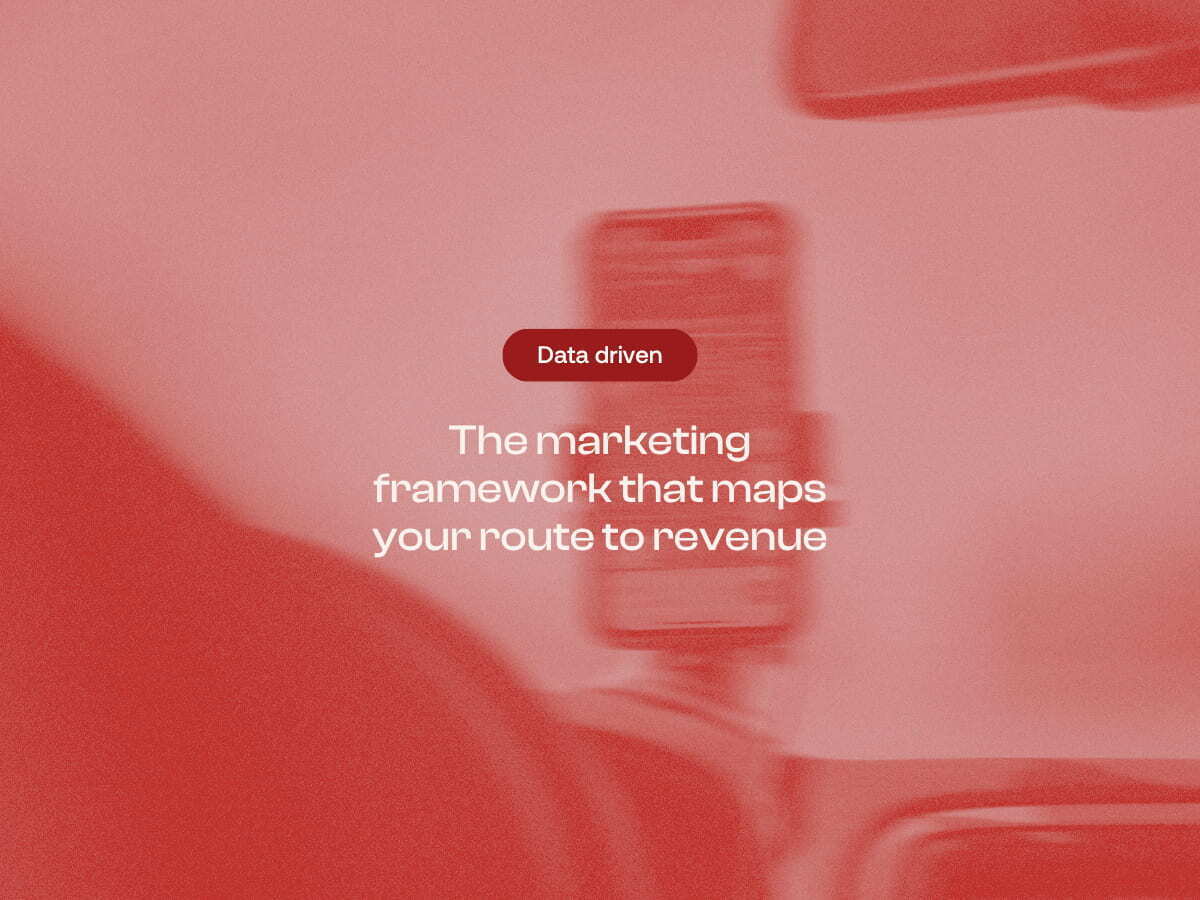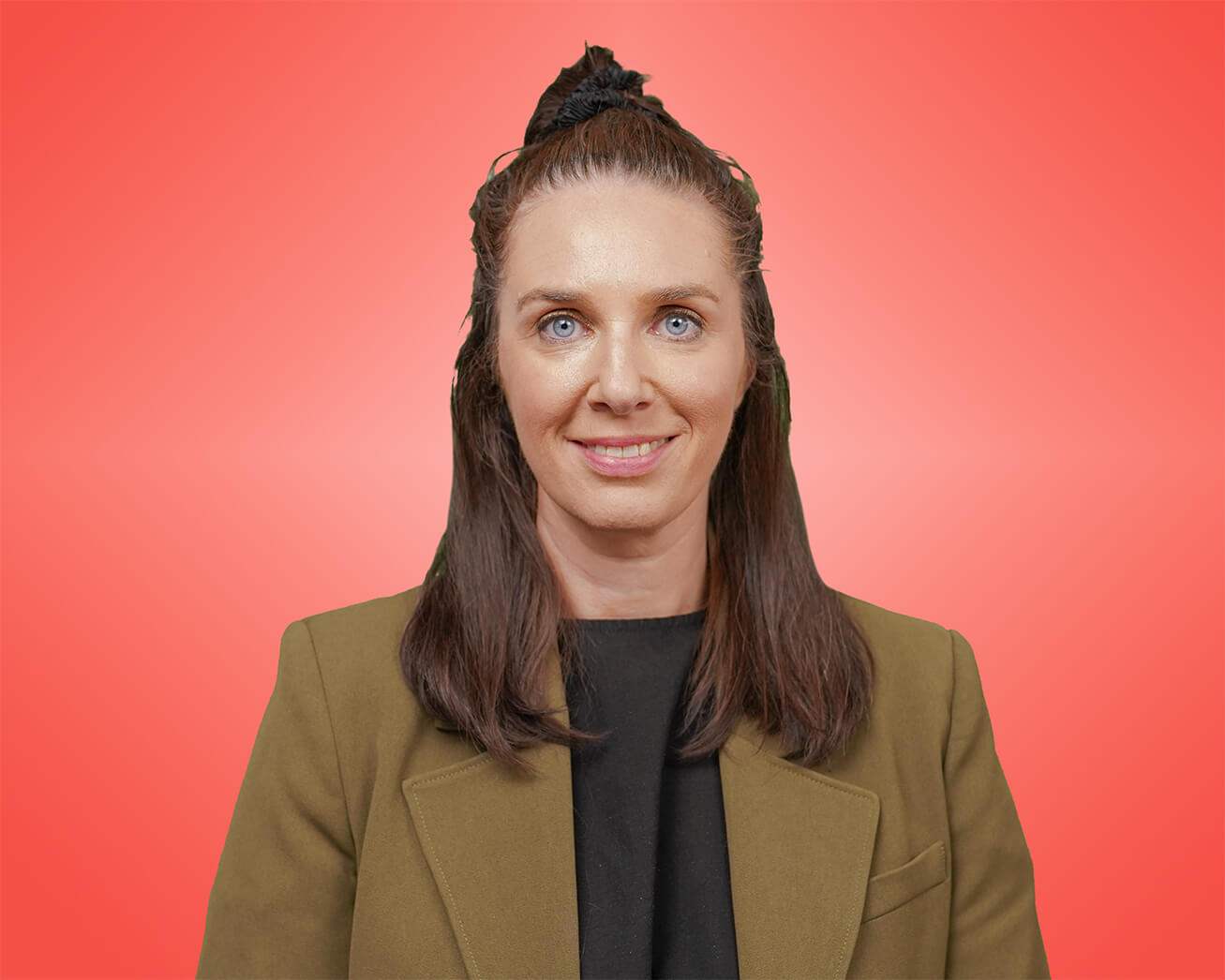Driving without a destination in mind wastes fuel. Marketing’s no different. If you don’t have the end goal in mind, you’re going to waste precious time and money zig-zagging to get there.
Goals are your sat‑nav. They tell you where you’re going, how much fuel (budget) you’ll burn and when to take a pit stop to fix what’s rattling.
But vague goals lead to vague results. What you need are tangible, specific goals that align directly with the overall business objectives. Without them, you’re simply driving to nowhere.
This is where the SMART goal framework comes in. It’s the ultimate GPS for your marketing strategy, turning hopeful intentions into operational commitments.
The SMART goal framework: your marketing GPS
The SMART framework is designed to turn abstract ideas into measurable, timely and achievable objectives.
SMART was introduced by George T. Doran in Management Review (1981) as “Specific, Measurable, Assignable, Realistic, Time‑related.”
Since then, teams have adapted the words for modern cross‑functional work. Assignable became Achievable and Realistic became Relevant.
The essence remains though. Pick goals that are clear, owned, feasible and on a clock. Some teams also use SMARTER (adding Evaluate and Readjust) to hardwire a review loop.
What does SMART goals stand for?
SMART goals meaning
- Specific: Your goal must focus on one clearly defined metric
- Measurable: The goal must have a way to be measured so you can track the progress
- Achievable: Your goal must be attainable. While a 1000% increase in leads sounds great, without significantly increasing your budget, it’s unlikely to be achieved
- Relevant: The goal needs to important to the business
- Time‑bound: Your goals must have an attainable deadline
If you can’t say who owns it, what will change, how you’ll measure progress, why it matters to the business and when it’s due, you don’t have a goal, you have a hope.
Why "A" and "R" often fail (... and how to fix it)
While Specific, Measurable and Time-bound are often straightforward, Achievable and Relevant are where most teams fail.
Where 'Achievable' breaks
Achievable breaks when you expect exponential results without changing your input.
- Baseline‑free targets: Don’t pick a number without 6–12 months of channel history. Know your median conversion rates, traffic and lead-to-sale ratios.
- Input–output mismatch: Expecting an increase of 30% in leads without increasing your budget, headcount or conversion rate optimisation efforts.
- Ramp‑time blindness: Demanding SEO results in four weeks and assuming a nurture program closes deals inside the month.
- Capacity math missing: Sales calendars are packed but you set a meeting goal that needs 20 extra discovery calls/week.
- Compounding fantasy: You set an increase of 15% month‑over‑month forever without changing inputs.
The fixes
Before setting a number, you need to do some research so you can set achievable goals.
Work out your baseline by logging medians for:
Put your inputs on paper. Work out your budget, FTE/contractor hours, creative volume, content bandwidth and sales capacity.
Create realistic ramp expectations. Paid search/social will take days to week. Conversion rate optimisation (CRO) and landing pages will take 2 to 8 weeks. HubSpot emails need 4 to 10 weeks to show full results. SEO and content marketing may take 6 to 12 weeks or longer.
Where 'Relevant' breaks
Relevance breaks when you chase metrics that don’t clearly drive the business’s bottom line.
- Vanity drift: Chasing followers, impressions or raw traffic with no proven link to MQLs, SQLs or revenue
- Metric soup: Avoid combining too many outcomes into one goal. Rank #1 for 10 keywords AND 500 leads AND CPL under A$80 all in one goal is a recipe for fractured focus.
The fixes
Use an outcome ladder:
Revenue → Pipeline → SQLs → MQLs → Leads → Sessions.
Pick the highest rung you can measure reliably. Your goals should be focused on these high-value outcomes with vanity metrics only used as guardrails.
Make sure to only have one metric per goal. If you need a second metric, make a second goal.
The outcome-to-input goal formula
To make your marketing goals achievable and relevant, start by looking at your profits. Work backward through your marketing funnel to determine the exact effort required. This is the outcome-to-input process.
This process ensures your targets aren’t guesses but calculated necessities.
Step 1: Pick the ultimate business outcome
Start at the highest rung of the ladder: what is the final result the business needs?
- B2B lead gen/services: Pipeline value (A$) or New Annual Recurring Revenue (ARR)
- eCommerce: Total Revenue (A$) or Contribution Margin if you’re fancy!
Step 2: Collect baselines and conversion rates
To calculate what you need, you first need to know where you are. These numbers are your historical forecasts. Think of it as your car’s current fuel efficiency and speed.
- Financial baselines: Average Deal Size (A$), Sales Close Rate (SQL→Won)
- Funnel rates: MQL→SQL, Lead→MQL, Session→Lead (or Conversion Rate)
- Capacity: Current sessions, leads, MQLs per period, available budget and sales/content capacity
Step 3: Convert the outcome to funnel quantities
Now we reverse-engineer the funnel to find out exactly what’s needed to generate your target revenue. This is the math.
Lead generation (B2B/services funnel)
- Deals needed: Target Pipeline (A$) / Average Deal Size (A$)
- SQLs needed: Number of SQL = Number (N) of deals / Close Rate
- MQLs needed: Number of MQL = Number of SQL / MQL to SQL Rate
- Leads needed: Number of Leads = Number of MQL / Lead to MQL Rate
- Sessions needed: Number of Sessions = Number of Leads / Session to Lead Rate
eCommerce revenue model
- Orders needed: Target Revenue / AOV
- Sessions needed: Orders needed / CVR
- If using paid traffic: Required ad spend = Orders × CPA or Sessions × CPC (check you’re under your ROAS/POAS limits)
Step 4: Gap analysis and levers
Compare the Sessions Needed from Step 3 with your Current Sessions from Step 2. The difference is your gap.
You have three primary levers to close this gap and make your goal Achievable.
- Add volume/distribution: Increase budget, target new channels (paid, SEO, partnerships)
- Improve conversion (CRO): Increase CVR, MQL-to-SQL, or Lead-to-MQL rates (eg better landing pages, shorter forms)
- Improve quality: Better targeting, cleaner lists or stricter lead definitions to improve downstream rates
Step 5: Choose initiatives and write the SMART statement
Now, you write the SMART goal, ensuring you include the inputs you chose in Step 4. This is crucial for the “A” (Achievable) element.
Example: You calculated you need 2,400 more sessions. You decide to close this gap by improving conversion instead of buying traffic.
SMART statement: Increase MQLs from 170 to 196 by 31 March 2026 by launching 2 gates assets, 1 webinar and pricing page CRO, supported by A$8k paid social
Step 6 and 7: Ownership and instrumentation
A goal without an owner is a goal that fails.
- Assign owner and budget: Nominate one person responsible and lock in the necessary budget and capacity
- Instrumentation first: Before you launch, ensure your tracking (UTMs, G4 conversions, HubSpot lifecycle stages) is set up. You can’t measure what you haven’t tracked.
Applying the SMART framework
Vague goals like “increase leads from our website” don’t cut it. Let’s look at how to apply the SMART framework to a marketing objective.
Vague goal: increase leads
SMART goal: increase qualified leads from our website by 10% by 31 March 2026 by optimising two high-traffic landing pages to support our target of $600k in pipeline.
See the difference? The goal is now specific, measurable, achievable, relevant and time-bound.
Let’s break it down even further to showcase how using the SMART framework can help you set realistic and achievable goals.
Example 1: eCommerce
Target (90 days): Revenue A$420,000
- AOV = A$140 → N_orders = 420,000 / 140 = 3,000
- CVR = 2.0% → N_sessions = 3,000 / 0.02 = 150,000
Current sessions: 120,000 → gap 30,000
Options:
- CRO route: raise CVR to 2.5% → sessions needed = 3,000 / 0.025 = 120,000 (current covers).
- AOV route: bundle to raise AOV to A$154 → orders = 420,000 / 154 ≈ 2,728; at 2.0% CVR → sessions = 2,728 / 0.02 = 136,400 (gap 16,400).
- Blended: CVR 2.3% + AOV A$154 → sessions ≈ 2,728 / 0.023 ≈ 118,609 (current covers).
SMART goal (resulting): Reach A$420k revenue by 31 Mar 2026 by lifting CVR from 2.0% → 2.3% via checkout UX + trust badges, raising AOV to A$154 with bundles, and adding A$12k retargeting; maintain ROAS ≥ 3.0.
Example 2: Services business (projects)
Target (Q2 2026): Pipeline A$300,000
- Deal size = A$25,000 → N_deals = 12
- Close rate = 30% → N_SQL = 12 / 0.30 = 40
- MQL→SQL = 35% → N_MQL = 40 / 0.35 ≈ 114.3 → 115
- Lead→MQL = 60% → N_lead = 115 / 0.60 ≈ 191.7 → 192
- Session→Lead = 3.0% → N_sessions = 192 / 0.03 = 6,400
Current: 5,200 sessions → gap 1,200
Paid fill (illustrative): CPC A$3.50, LP CVR 4% → CPL ≈ A$87.50. To produce 192 leads purely from paid would cost ≈ A$16,800; but you only need 1,200 incremental sessions (not all leads), so blend CRO and paid to cut cost.
SMART goal (resulting): Produce 192 qualified leads by 30 Jun 2026 by launching 3 LP variants, A$9k Google Ads, and sitewide CRO; target 115 MQLs and 40 SQLs at current funnel rates toward A$300k pipeline.
Once you’ve done the funnel math, you can drill down into the channels you will use to close the gap. To help you out, here are some channel-specific SMART goals you can adapt to your business.
These goals focus on increasing quality, commercial-intent visability and ensuring your local presence is driving action.
Paid social is a strong tool for targeting specific audiences. It helps with early funnel lead capture and direct Account-Based Marketing (ABM) influence.
These goals make sure your nurture sequences, lead handling and database hygiene work efficiently. This will greatly improve your downstream conversion rates.
CRO and website performance are often the quickest ways to improve. They help you get more value from your current traffic without spending more on ads.
Use these goals to ensure every piece of content, from guides to webinars, generates measurable leads and pipeline impact.
These goals focus on data hygiene, speed of reporting and critical sales-marketing alignment.
Use these goals to track measurable increases in awareness or market dominance metrics.
Setting SMART goals is only the starting line. You need a disciplined review cadence to stay on track. Avoid leaving your results to luck by instituting a regular SMARTER loop to include Evaluate and Readjust. This means checking your progress weekly, adjusting your course monthly and resetting the entire map quarterly.
You can’t just wish for better results or more revenue. The SMART framework provides the structure and discipline necessary for true marketing growth. It forces you to connect the dots between your activities and the ultimate business outcomes.
Begin with the business outcome. Then, calculate the funnel math. Choose the levers you will use. Finally, write goals that include the owner, the budget and the finish line. Do that, and your team isn’t just driving, you’re arriving.
When you are ready to stop guessing, we can help you run the numbers. We can model your scenarios and test your targets against your budget. This will help make your SMART goals a reality.








